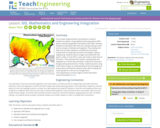
From the Top at Carnegie Hall video featuring a performance by 12-year-old Anna JiEun Lee on the violin. [4:41]
- Subject:
- Arts
- Material Type:
- Lesson
- Provider:
- PBS LearningMedia
- Date Added:
- 12/01/2022

From the Top at Carnegie Hall video featuring a performance by 12-year-old Anna JiEun Lee on the violin. [4:41]
![Frontline: The [Credit] Card Game](https://img.oercommons.org/160x134/microsite-infohio-prod/media/upload/materials/screenshots/materials-course-16775.png)
Information and analysis on the practices of the loan industry in America. Focus is on the wave of financial services legislation, which attempts to curb abusive tactics of banks and credit card issuers, that came into effect in 2010.

This site from the Fu Jen University contains information on different types of outlines and gives examples of each. It also gives other information on writing outlines.

Students can play interactive games and learn nutrition facts.

Free choice centers offer many benefits for preschoolers. It allows them to direct their own learning, make their own decisions, and learn time management. Here are some ideas for implementing free choice centers in your classroom.

As part of ongoing efforts to promote financial literacy education across the state, the Ohio Treasurer’s office has released a free winter-themed financial literacy activity toolkit.
The Fun with Finance Teacher Toolkit is designed for students in grades 1-5 and focuses on the foundations of budgeting. The “Can You Build a Snowman on a Budget?” classroom activity asks students to use a worksheet to gather items for their snowman while remaining within a set budget of $15.
Each snowman accessory, such as a hat or buttons, costs $1-$3 and students must choose an item from each category to complete their snowman. Through this activity, young Ohioans will receive an introduction to making smart financial choices within a budget - all while enjoying a fun, seasonal craft.

A video [2:50] explaining how to use future tense verbs when writing about future events.
Khan Academy learning modules include a Community space where users can ask questions and seek help from community members. Educators should consult with their Technology administrators to determine the use of Khan Academy learning modules in their classroom. Please review materials from external sites before sharing with students.

Informational site provides illustrated tutorial of light reflection. Also discusses the law of reflection.

GDP and Pizza: Economics for Life is designed to help students in civics, economics and other social studies classes grasp challenging economic content - and to explain why these topics are important for citizens to understand.
Section One covers:
the definition Gross Domestic Product (GDP)
the components of GDP
per capita GDP
Section Two covers:
real vs. nominal GDP
levels vs. percentage change
importance of a growing economy
trend growth rate
uses for GDP data
automatic stabilizers
The module includes numerous interactive checks for understanding, video clips of a Fed economist explaining concepts and everyday examples that will make sense to students. In addition, students complete a pre- and post-test to assess learning. This content from Econ Lowdown also features alignment to national Financial Literacy and/or Economics standards.

GDP: Measurement and Growth is the second short module in the GDP and Pizza: Economics for Life series. This series is designed to help students in civics, economics and other social studies classes grasp challenging economic content - and to explain why these topics are important for citizens to understand.
GDP: Measurement and Growth assumes students already understand the basics of GDP as well as GDP per capita and standard of living. It covers:
real vs. nominal GDP
levels vs. percentage change
importance of a growing economy
trend growth rate
The module includes numerous interactive checks for understanding, video clips of a Fed economist explaining concepts and everyday examples that will make sense to students. In addition, students complete a pre- and post-test to assess learning. This content from Econ Lowdown also features alignment to national Financial Literacy and/or Economics standards.

GDP: Policy is the third short module in the GDP and Pizza: Economics for Life series. This series is designed to help students in civics, economics and other social studies classes grasp challenging economic content - and to explain why these topics are important for citizens to understand.
GDP: Policy assumes students already understand the basics of GDP as well as GDP growth and measurement. It covers:
uses for GDP data
automatic stabilizers
The module includes numerous interactive checks for understanding, video clips of a Fed economist explaining concepts and everyday examples that will make sense to students. In addition, students complete a pre- and post-test to assess learning. This content from Econ Lowdown also features alignment to national Financial Literacy and/or Economics standards.

GDP: What Is It? Is one of three short modules that are part of a series GDP and Pizza: Economics for Life. The series is designed to help students in civics, economics and other social studies classes grasp challenging economic content - and to explain why these topics are important for citizens to understand.
This first short module, GDP: What Is It? covers:
the definition Gross Domestic Product (GDP)
the components of GDP
per capita GDP
The module includes interactive checks for understanding, video clips of a Fed economist explaining concepts and everyday examples that will make sense to students. In addition, students complete a pre- and post-test to assess learning. This content from Econ Lowdown also features alignment to national Financial Literacy and/or Economics standards.

Get help preparing for the GED with these resources.
Lessons include: (1) GED Prep Resources. Use these resources to help you prepare for the GED exam. (2) GED Alternatives. Learn more about two popular GED alternatives that are available to earn a high school equivalency diploma.

The concept of geocaching is introduced as a way for students to explore using a global positioning system (GPS) device and basic geographic information (GIS) skills. Students familiarize themselves with GPS, GIS, and geocaching as well as the concepts of latitude and longitude. They develop the skills and concepts needed to complete the associated activity while considering how these technologies relate to engineering. Students discuss images associated with GPS, watch a video on how GPS is used, and review a slide show of GIS basics. They estimate their location using latitude and longitude on a world map and watch a video that introduces the geocaching phenomenon. Finally, students practice using a GPS device to gain an understanding of the technology and how location and direction features work while sending and receiving data to a GIS such as Google Earth.

Compare fractions (halves, quarters, eighths) that make up a whole by drawing toppings on pizzas and cutting the pizzas into slices!
Visit Gabby's pizza shop to help Adi take pizza orders from customers. Viewers learn fractions that make up a whole by drawing pizza toppings in halves and quarters and cutting the pizzas into one eighth slices.
Learning Objective:
To partition objects into equal parts and name the parts, including halves, fourths, and eighths, using words.

In the early 1600s, most people believed that the Sun revolved around a stationary Earth. This video segment adapted from NOVA tells how Galileo proved that the Sun, not Earth, is at the center of our universe.

This illustrated timeline from the NOVA Web site turns back the clock to the late 1500's to relive the dramatic life of one of the world's most renowned scientists.

The invention of the telescope helped change our understanding of the universe. This video segment adapted from NOVA looks at Galileo's contribution to this technology. [1:49]

Over the course of many years, humans evolved to abandon foraging and took up farming for their food needs. Scientists are still not sure why humans abandoned foraging and took up farming in several places around the world at about the same time. This gallery highlights where agriculture emerged and what was grown.
Khan Academy learning modules include a Community space where users can ask questions and seek help from community members. Educators should consult with their Technology administrators to determine the use of Khan Academy learning modules in their classroom. Please review materials from external sites before sharing with students.

While all cells have a great deal in common, there is no end to the variation among them. These images provide a sense of the wondrous diversity found in the world of cells.